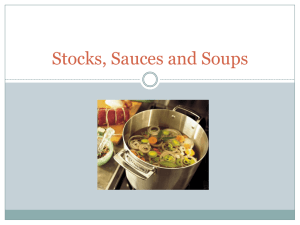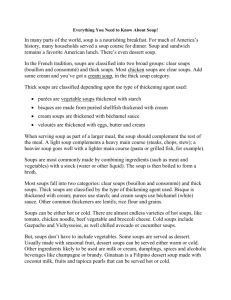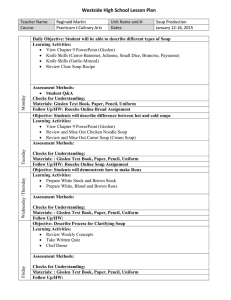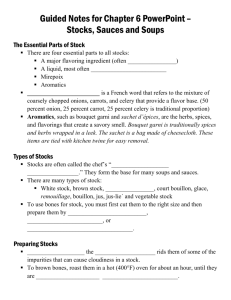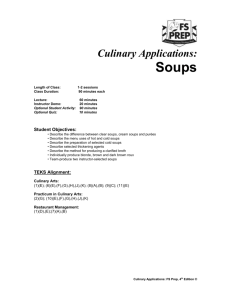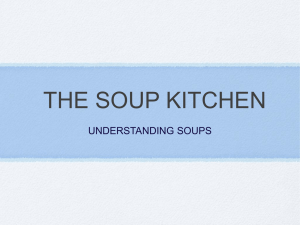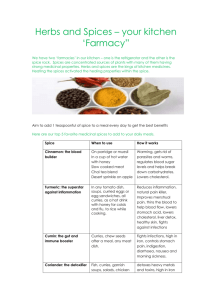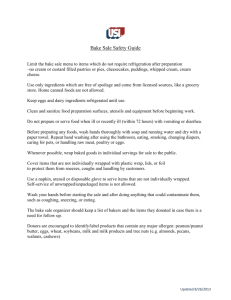Unit 237 prepare, cook and finish basic soups Ingredients for soup
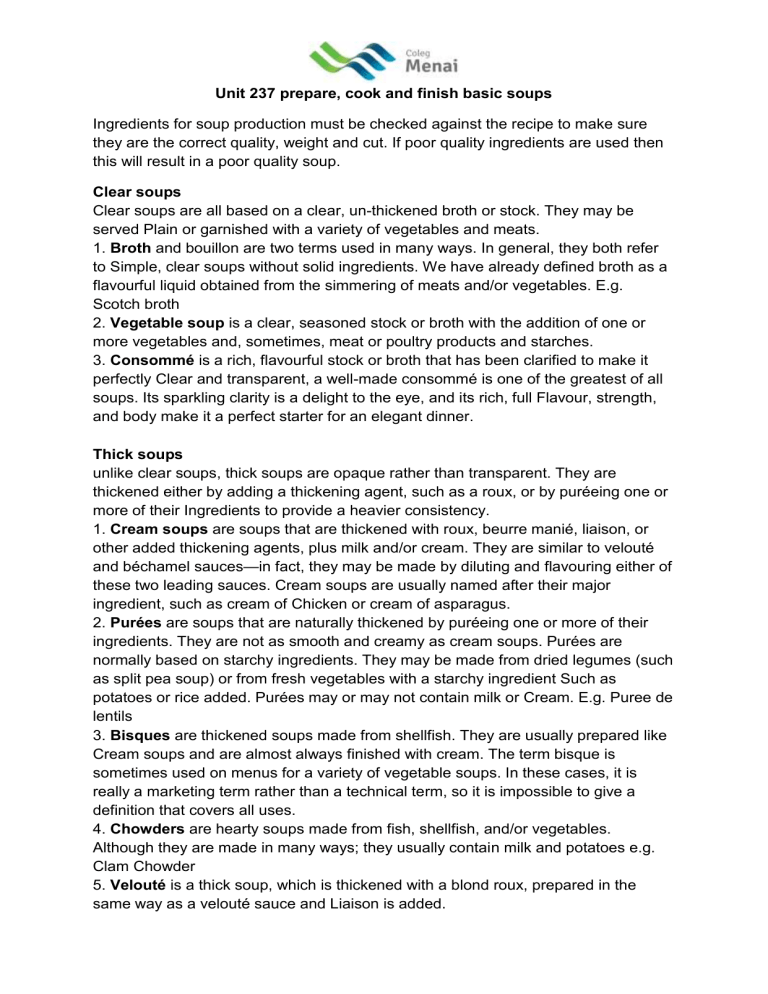
Unit 237 prepare, cook and finish basic soups
Ingredients for soup production must be checked against the recipe to make sure they are the correct quality, weight and cut. If poor quality ingredients are used then this will result in a poor quality soup.
Clear soups
Clear soups are all based on a clear, un-thickened broth or stock. They may be served Plain or garnished with a variety of vegetables and meats.
1. Broth and bouillon are two terms used in many ways. In general, they both refer to Simple, clear soups without solid ingredients. We have already defined broth as a flavourful liquid obtained from the simmering of meats and/or vegetables. E.g.
Scotch broth
2. Vegetable soup is a clear, seasoned stock or broth with the addition of one or more vegetables and, sometimes, meat or poultry products and starches.
3.
Consommé is a rich, flavourful stock or broth that has been clarified to make it perfectly Clear and transparent, a wellmade consommé is one of the greatest of all soups. Its sparkling clarity is a delight to the eye, and its rich, full Flavour, strength, and body make it a perfect starter for an elegant dinner.
Thick soups unlike clear soups, thick soups are opaque rather than transparent. They are thickened either by adding a thickening agent, such as a roux, or by puréeing one or more of their Ingredients to provide a heavier consistency.
1. Cream soups are soups that are thickened with ro ux, beurre manié, liaison, or other added thickening agents, plus milk and/or cream. They are similar to velouté and béchamel sauces—in fact, they may be made by diluting and flavouring either of these two leading sauces. Cream soups are usually named after their major ingredient, such as cream of Chicken or cream of asparagus.
2.
Purées are soups that are naturally thickened by puréeing one or more of their ingredients. They are not as smooth and creamy as cream soups. Purées are normally based on starchy ingredients. They may be made from dried legumes (such as split pea soup) or from fresh vegetables with a starchy ingredient Such as potatoes or rice added. Purées may or may not contain milk or Cream. E.g. Puree de lentils
3. Bisques are thickened soups made from shellfish. They are usually prepared like
Cream soups and are almost always finished with cream. The term bisque is sometimes used on menus for a variety of vegetable soups. In these cases, it is really a marketing term rather than a technical term, so it is impossible to give a definition that covers all uses.
4. Chowders are hearty soups made from fish, shellfish, and/or vegetables.
Although they are made in many ways; they usually contain milk and potatoes e.g.
Clam Chowder
5.
Velouté
is a thick soup, which is thickened with a blond roux, prepared in the same way as a velouté sauce and Liaison is added.
Puree soups are very popular as they are easy to make and tend to be a healthy option as they are thickened by their own mass and do not require a roux. To keep a soup healthy cream and dairy products should be avoided and minimum salt added.
If a soup contains a roux or thickening agent it must reach 100°c to allow the starch to work, the law requires a safe temperature of above 75 °c but it is advisable for all soups to reach boiling for a minute or two.
Soups can be served in bowls and cups it and be garnished in a variety of ways some are stipulated in the recipe for example French onion soup is served with a cheese crouton, other garnishes include
Cream
Chopped herbs
Croutons
Quenelles
Quails eggs.
